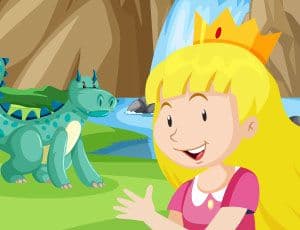Escola Games | Jogos Educativos
https://www.escolagames.com.br
Teacher's support sheet

A Princess' life
The princess lives in a kingdom full of joy
Enchantment and charm
Lets see their story and be part of this magic.

Teacher's tips
Level of Education: Elementary School - Preschool
Age: 05 to 09 years old
Subjects: English - Mathematics - History
Fairy tales are familiar to kids, allowing them to know different worlds and cultures and to learn about the language we use to write. sa fase, imaginar permite conhecer mundos distantes ou diferentes culturas e, acima de tudo, permitem aprender sobre a linguagem que usamos para escrever. These stories help in multiple teaching-learning processes, such as paying attention to words, widening vocabulary, and using sentences, different expressions, and rhymes. This game aims to strengthen kids' imagination, letting them focus on composing and decomposing images. [FIM-DICA]
Learner outcomes
To work with memory and imagination;
To improve attention, focus, and logical thinking;
To stimulate their interest in stories;
To know fairy tales;
To develop self-assurance when solving problems;
To analyze forms and expand the ideas of composing and decomposing shapes;
To recognize the different positions of fragmented figures in an image;
To highlight the discrimination and visual perception through the analysis of fragments and their correct place on the illustration;
To develop different thinking skills, such as observation, analysis and evaluation, and problem-solving.
Teachers' goals
To stimulate the development of language discrimination and visual perception;
To enable the development of students' creativity and logical thinking;
To promote moments of pleasure through the story;
To widen students' knowledge;
To work with motor skills, focusing skills, and logical thinking.
Suggestions of approaches for the teacher
(Approach 1) Organize a day to produce puppets and then tell stories to them. You can also use chopsticks with glued drawings to do this activity.
(Approach 2) Ask students to tell the class their favorite fairy tales or story.
(Approach 3) In groups, ask students to choose one of the game's characters and write strips about them.
(Approach 4) Plan with the students a moment to paint their faces so they can do a play about a fairy tale of their choice.
(Approach 5) Print images of fairy tales for students to color or paint.
(Approach 6) Hand students incomplete strips and ask them to complete the story.
(Approach 7) Theatre of shadows: Place a lamp or ring light on a table facing a wall. Now, place your hands or puppets in front of it so that their shades are on the wall. You can create or reproduce figures like animals by moving your hands. Be creative. Encourage students to think of a play using shadows.
(Approach 8) Mimicking. Form a circle with students and invite one or more students to mimic. The ones watching it must guess which story they are mimicking.
(Approach 9) Storytelling using objects. Ask students to take objects and toys to school so they can create stories with them.
(Approach 10) Produce scenarios and clothes and suggest that students create narratives with them.
(Approach 11) Create plays based on songs.
(Approach 12) Dressing characters. Print characters and hand materials like fabric and different types of paper. Ask students to create clothes for their characters. You can determine the style of clothes according to the theme you are discussing with students, such as royalty or movie characters.
More about the content
The importance of imagination
Kids usually imagine themselves as heroes, villains, doctors, teachers, mothers, and fathers, which enables them to understand ways of acting and relating with others. Kids learn a lot with their imagination. When they create contexts for those imaginary scenarios, they use their experiences, which helps them to comprehend how those social situations work.
Imagining is fundamental to kids, and adults need to stimulate it. You can invite them to play, tell stories, and discuss various topics. Value kids' imagination and give them opportunities to exercise it because It is vital for their development.
